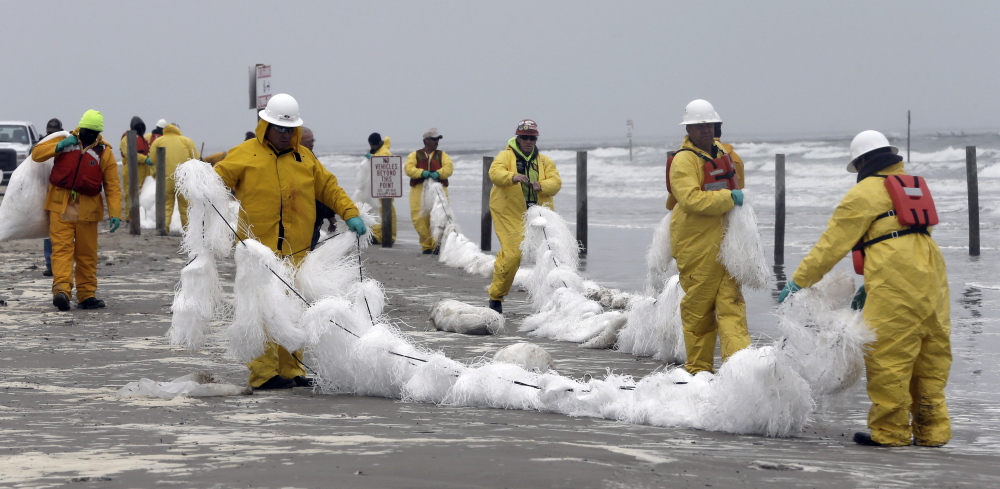GALVESTON, Texas — The Coast Guard aimed to reopen one of the nation’s busiest seaports Monday, two days after a collision between a barge and a ship caused as much as 170,000 gallons of tar-like oil to spill into the waters south of Houston.
Officials believe most of the oil that spilled Saturday is drifting out of the Houston Ship Channel into the Gulf of Mexico, which should limit the impact on bird habitats around Galveston Bay as well as beaches and fisheries important to tourists.
The closure stranded some 80 barges on either side of the channel.
But the Coast Guard hoped to reopen it to some traffic later in the day, allowing those vessels to enter or leave the bay.
“This spill – I think if we keep our fingers crossed – is not going to have the negative impact that it could have had,” said Jerry Patterson, commissioner of the Texas General Land Office, the lead state agency on the response to the spill.
The best-case scenario is for most of the slick to remain in the Gulf for several days or longer and congeal into small “tar balls” that wash up further south on the Texas coast, where they could be picked up and removed, Patterson said.
Crews from the General Land Office are monitoring water currents and the movement of the oil, he said.
Parts of Galveston Island were closed to the public as the cleanup entered its third day.
Crews have laid booms around environmentally sensitive areas.
Some black, tar-like globs, along with a dark line of a sticky, oily substance, were seen along the shoreline of the Texas City dike, a 5-mile jetty that juts into Galveston Bay across from a tip of Galveston Island.
Seawolf Park in Galveston, a popular spot for fishermen and tourists, was closed Monday after small amounts of oil were spotted in the water, manager John McMichael said.
“Anytime you shut down the park, it’s going to have an economic impact,” McMichael said. “How much, we don’t know because we don’t know how long the park will be closed.”
Jim Guidry, executive vice president of Houston-based Kirby Inland Marine Corp., which owned the barge, has said the company – the nation’s largest operator of inland barges – would pay for any cleanup costs.
“We’re very concerned. We’re focused on cleaning up,” he said.
Refineries in Texas City appeared to have enough crude oil on hand to continue operating until the ship channel can re-open, Patterson said.
Environmental groups said the spill occurred at an especially sensitive time and place. The channel in Texas City, about 45 miles southeast of Houston, has shorebird habitat on both sides, and tens of thousands of wintering birds are still in the area.
At least 50 birds of six species have needed treatment due to the oil, said Richard Gibbons, conservation director of the Houston Audubon Society. The species include sanderling, ruddy turnstone and the American white pelican, Gibbons said.
Gibbons agreed that the majority of the oil could wash up as tar balls further south. If it hits the coast sooner, it could damage the natural habitat of many more birds, he said.
The spill also suspended state-operated ferry service between Galveston and Port Bolivar, affecting thousands of travelers.
Two cruise ships were allowed to travel through the spill area “to minimize inconvenience” to thousands of passengers and limit the spill’s economic effects, the Coast Guard said.
The channel, part of the Port of Houston, typically handles as many as 80 vessels daily.
Send questions/comments to the editors.



Success. Please wait for the page to reload. If the page does not reload within 5 seconds, please refresh the page.
Enter your email and password to access comments.
Hi, to comment on stories you must . This profile is in addition to your subscription and website login.
Already have a commenting profile? .
Invalid username/password.
Please check your email to confirm and complete your registration.
Only subscribers are eligible to post comments. Please subscribe or login first for digital access. Here’s why.
Use the form below to reset your password. When you've submitted your account email, we will send an email with a reset code.